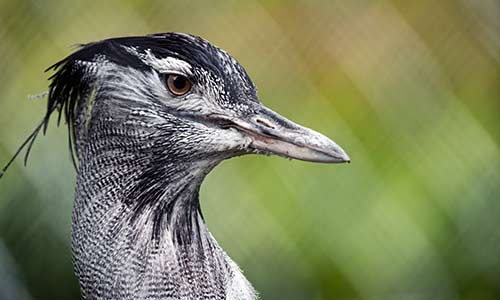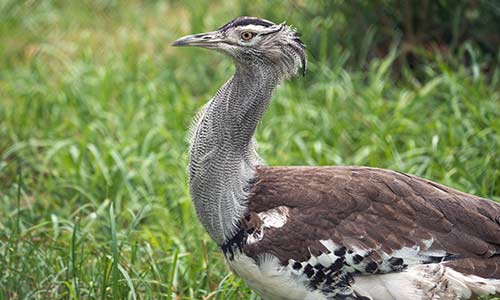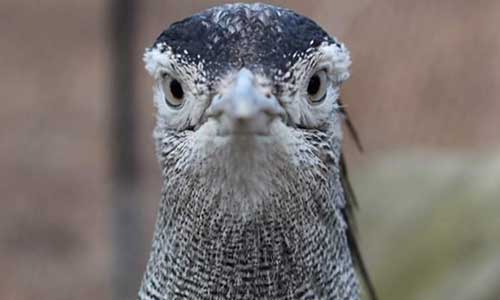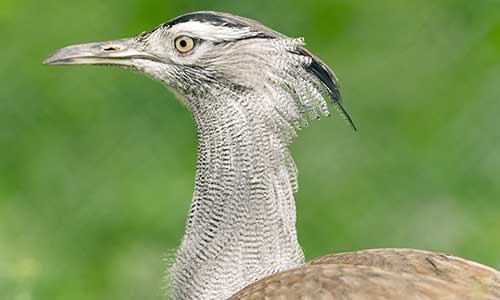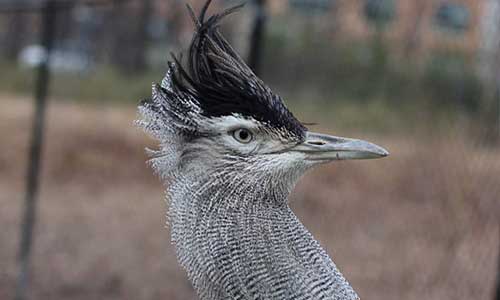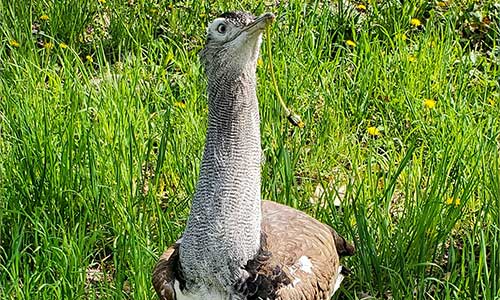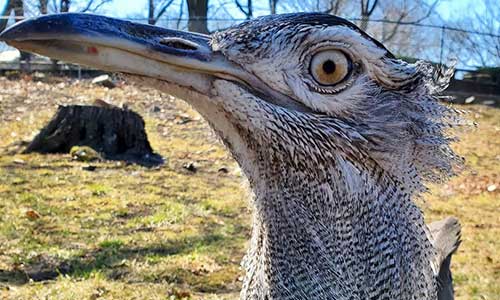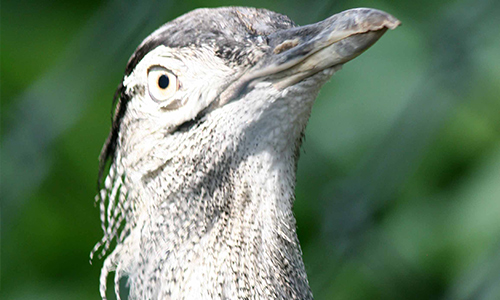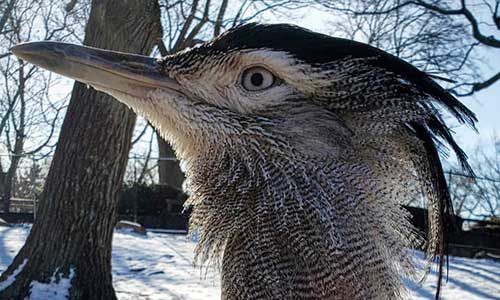Kori Bustard
Ardeotis kori
About the Kori Bustard
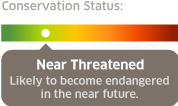
Geographic Range:

Class: Aves
Order: Gruiformes
Family: Otididae
Genus: Ardeotis
Species: kori
The kori bustard has just three forward-pointing toes, which are short, broad and well adapted for running, which they prefer to flying. Kori bustards have no hind toe and therefore are not adapted for perching. When alarmed or threatened, both males and females will give a loud bark or perform what’s known as the "shock display," in which the bird bows forward, lifts its tail feathers, and spreads its wings in order to appear larger to a potential predator.
Kori Bustard Facts
Appearance:
Kori bustards are primarily mottled grayish-brown in color. They have a black crest on the crown of their heads and a white stripe over each eye. The chin, throat and neck are creamy white with black bands, while the underparts are buff. The tail and primary feathers have wide bands of grayish brown and white, and the shoulders have a black and white checkered pattern.
Size:
Height: Males stand around 4.5 feet and females around 2.25 feet
Weight: Males weigh around 30 pounds and females 15 pounds
Diet:
Kori bustards are omnivores, but they primarily eat meat. They prefer lizards and other small animals, but they'll also eat insects and berries.
Reproduction:
Generally, one male will mate with several females, though monogamous pairs have been observed in captivity. The female is then left to build the nest, which is usually no more than a shallow scrape in the ground, and raise the young alone. One or two pale olive eggs splotched with brown are laid and hatch after an incubation of 23 to 30 days. The fledging period is approximately five weeks, and sexual maturity is reached at about 3 to 5 years of age.
Behavior:
Kori bustards are flexible when it comes to social groups. They can live alone, in pairs or in small groups. Males perform a courtship dance to entice females to mate. They prefer to remain on the ground, but they'll fly when necessary. They don't have a gland used for preening, so they take dust baths to stay clean. Kori bustards have formed a mutualistic relationship with the Carmine bee-eaters, a species of bird. The bee-eater rides on the back of Kori bustards and eats insects disturbed by the Kori bustards own foraging. In return, the bee-eater warns the Kori bustard about nearby predators.
Habitat/Range:
Kori bustards live in open grasslands and the lightly wooded areas of the savannah. They prefer to hunt in areas of short grass that allow them good visibility. There's an East African subspecies that is found in Tanzania, Kenya and Ethiopia. Another subspecies lives in southern Africa and is found in Botswana, Zimbabwe, Namibia, Angola, Mozambique and South Africa.
Median Life Expectancy:
Life expectancy in the wild is unknown. In captivity they have lived up to 25 years.
Threats:
Encroachment by human populations into their habitat is their main threat. They've been documented to have problems with flying into power lines. There's also some evidence that they're hunted for bush meat.
You Can Find This Animal in the Kalahari Kingdom
Feather Collecting for Conservation
We participate in the Kori Bustard Molted Feather Project, a program in which the birds’ molted (shed) feathers are distributed at no cost to fly fishermen for use in making their lures.
You might also like
At Franklin Park Zoo:
At Stone Zoo:

